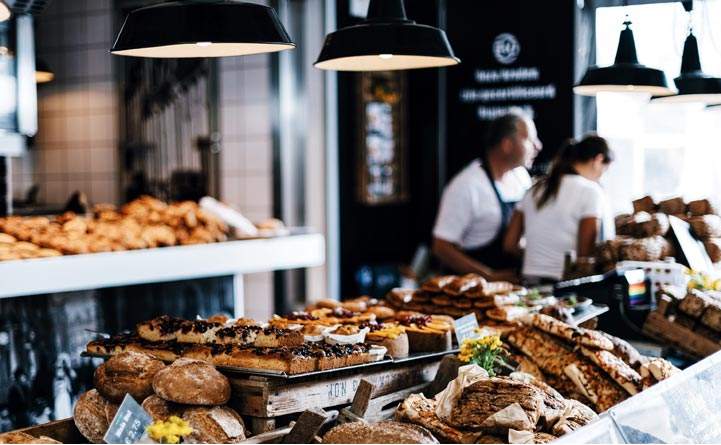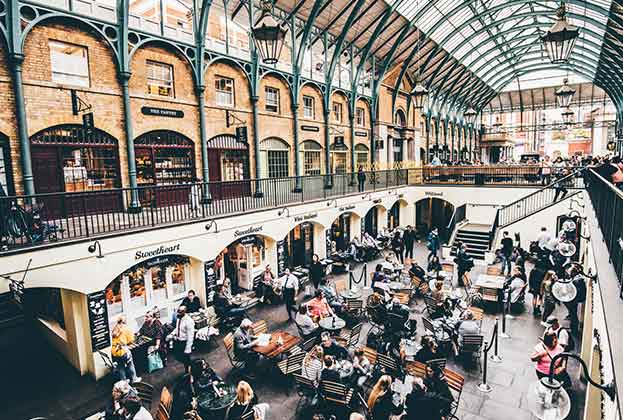The health crisis has brought forward a number of key trends that were already reshaping retail
Each country we monitor has its own challenges and a different timeline with reopening and managing infection rates. However, the impact this is having on the retail sector, the way retail places are changing and the challenges this presents to landlords are surprisingly consistent. We need to retain confidence that the current situation is not a permanent fixture; things are not fundamentally changed for good, but that the next normal will not be quite the same as before.
What we are witnessing is the accelerated evolution of a number of key trends that were already reshaping retail. These trends have been gradually reducing our need for retail, and the advent of Covid-19 may well have moved us forward five years in the advancement of these trends.

Retailer portfolios
At this moment it is difficult to predict the future for retailers, but the recovery of the sector will depend to a great extent on the financial soundness of the companies, on the effectiveness of public subsidies and, the capacity and speed of businesses to adapt to the new normality and the willingness of consumers to return.
Reduction of employees, adoption of the sale & leaseback format to face the need for capital, redefinition of store networks, commitment to digital spaces and last-mile logistics, are some of the formulas that entrepreneurs will adopt to face this new situation.
Factors such as increased homeworking have altered shopping patterns and created new challenges to retail brands' supply chain process. While many brands had to swiftly adjust their entire business model and adopt new delivery models, many of these changes were already overdue. Accessing customers in suburbs and rural cities will have an impact not only on their logistics network but also on the choice of the size and geographic distribution of their physical stores.
Changes in consumer behaviour will determine the future of retail strategies. Economic uncertainty and health concerns are the two most important factors that will influence their shopping patterns and habits. Flight to value, focus on essential and meaningful shopping and the rise of e-commerce have emerged as the most common ones across Europe.
E-commerce
During the crisis, online channels are likely to step forward 3–5 years, depending on the territory and the category. Fear of contagion, concerns about hygiene standards in stores and convenience are some of the factors that will continue to underpin the appeal of e-tailing. With queues outside supermarkets and the need to wear masks, online shopping will continue to be a compelling proposition and likely to be habit-forming the longer the situation persists, particularly as the situation moves towards Winter. Additionally, the increasing familiarity of older generations with online shopping will undoubtedly result in a higher contribution of this demographic group to e-commerce.
In the more digitally developed markets, online retail sales are predicted this year and next to cross the 10% threshold (France, Sweden, Netherlands) and in the less mature ones to closely reach it (Spain, Poland, Belgium). In the established markets of the UK and Germany, online sales are expected to capture close to a quarter and to one-fifth of total retail trade respectively, with the rest of the activity still conducted in physical stores.
However, we caution against predicting the future of e-commerce based on the spikes in trading experienced during lockdown when there was no alternative. E-commerce continues to serve some categories better than others and even online grocery, which in the UK temporarily increased penetration by 300%, was still only accounting from a marginal base. This is a huge leap of course, but we need to retain perspective on where the majority of retail trips are made.
When consumers across a number of European markets were asked (McKinsey & Company Consumer Pulse Survey) how they expect their habits to change when the coronavirus situation has subsided compared to pre-crisis, the overall net intention of consumers was to maintain the same shopping habits: there was no overall change observed in the intention to shop online for non-grocery products, while a net 8% of consumers intend to shop less online and 6% to shop more in physical stores for groceries.
However, there was a clear message that consumers will shop less for non-essential goods in physical stores: a net average of 17% will decrease their visits to the mall, and 5% will shop less in physical stores for non-grocery products. We believe that this attitude is likely to last as long as the economic crisis dampens confidence and spending putting pressure on retailers and landlords of shopping malls. The variations of answers per country are broadly correlated to the degree of transmission of the virus and the stringency of measures applied.
Convenience and value
Retailers that were planning to jettison their regional and local stores in favour of prime city centres are now reconsidering their strategies. Indeed, many convenience food outlets and medium-sized supermarkets in the urban areas have been relatively resilient over the lockdown period. Even if once this is over people are only working from home an extra two or three days a week, that’s still an increase in local demand and decrease in city centres and business hubs. We therefore expect to see the resurgence of interest in neighbourhoods and towns with sizeable and growing residential stock.
Many convenience food outlets and medium-sized supermarkets in the urban areas have been relatively resilient over the lockdown period
Savills European Research
This follows a trend that Savills Research has been reporting for some years now, on the importance of community and convenience retailing. We have previously forecast local retailing to be more resilient to the impact from e-commerce than prime retail destinations and in the aftermath of the pandemic, people will favour local community-focused retail compared to destination schemes, for the immediate future. Consumers seeking tried, tested and trusted compared to seeking new and experiential visits.
Another trend that has already been evolving since the previous economic crisis is consumer focus on value. With rising concerns about the future of the economy, people will be spending more on essential goods, and they will be looking for value for money. This trend had fuelled the expansion of value retailers over the past few years, a trend that will intensify again. We expect their efforts to concentrate on town locations that attract community shopping and well accessible out-of-town locations and schemes.
LEASING MODELS & VALUATION
Downward pressure on rents, either via re-basing or through alternative approaches to leasing models, will dictate much of the debate between landlord and tenants. Retailer affordability is not expected to recover to 2019 levels and was already under pressure – a consistent message we get from across the Savills’ network. Even in markets where turnover rents are prevalent, the affordability matrices may be permanently altered and leases in need of adaptation.
Whether the market embraces these discussions or diverts to them reluctantly, there are serious consequences for the way we value retail assets, and indeed, a bigger question is whether many of them will remain solely retail assets at all.
The future of the store
There is a significant change in consumer behaviour, and the impact on physical stores will be substantial, especially if, as expected, several stores will not reopen (8% estimated in the UK). However, we need to be clear that nevertheless, a significant proportion of retail transactions remain in-store.
The collaboration between landlords and tenants will be of paramount importance over the coming months, until a vaccine or a treatment brings the health crisis to an end. Even then, the recovery will be gradual, and certain habits will remain with us, meaning that the current models of leasing space may become inefficient and irrelevant. Owners and occupiers are becoming partners who both share the gains and pains of the market conditions in order to ensure the long term viability of both. Lease terms flexibility, turnover rents, shorter leasing periods, collaboration in omnichannel strategies are some of the issues to be considered.

Evolving retail spaces
With the need for retail space in decline, an urgent review is required by all landlords, asset managers and town centre planners in rethinking retail space. Failing to act will result in many places losing relevance and further increases in voids. Adapting retail space to alternative uses is still seen by many as a last resort, but is far from a hopeless resignation towards the death of retail places. On the contrary, it is a fundamental consideration that will see dynamic retail survive and mixed-use retail spaces thrive.
There remains demand for new retail concepts that fit with evolved consumer preferences and additional space where demand has shifted to, but this can only happen if the industry is prepared to move away from single-use assets. The retail spaces that survive will be genuine mixed-use spaces that benefit all uses by creating footfall through linked trips, operating different day parts, have greater social value, are more vibrant and in tune with the needs of the catchment. Evolving places will prove the most sustainable and the most resilient.
Read the articles within Spotlight: Impact of Covid-19 on European retail below.
.jpg)


